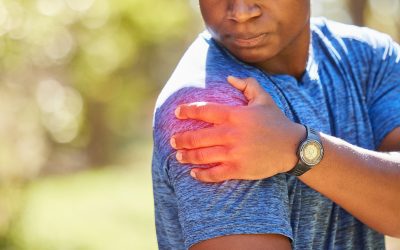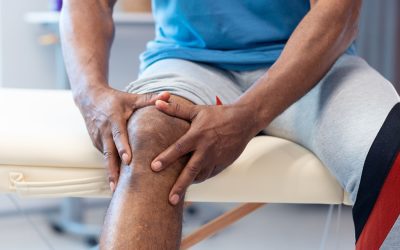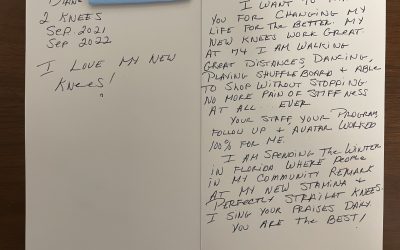Ten years ago, it was widely felt that conventional hip and knee replacements would last 15 years and that patients who underwent these procedures should consider substantial activity and lifestyle modification to avoid the risk of premature wear and potential failure. Today’s joint replacement patient, however, is different than many in the past. We see more and more patients in their 40s, 50s and 60s who require hip and knee replacement. Historically, younger patients were told they had to wait until they were 65 years old due to concerns over the potential need for revision. Younger patients today are unwilling to wait through years of suffering and physical limitation. These same patients are less likely to forgo activities that wish to continue after joint replacement. Furthermore, many patients in their 70s and 80s remain very active in physically demanding exercise, and outdoor leisure time pursuits. These patients also want to continue their activity after a hip or knee replacement since it is now clear that these same activities promote improved general health and improved cognition.
Fortunately, a collaboration between physicians, scientists and engineers has better defined wear and failure mechanisms of the polyethylene which is the plastic bearing surface used in >95% of joint replacements. An industrial grade plastic, polyethylene has been used in joint replacement for over 4 decade and has proven incredibly durable but subject to cyclical wear, fretting, fracture, delamination and other means of failure. Cross-linking the individual molecules within the structure of polyethylene substantially improves its wear resistance and its ability to tolerate cyclical loads. New means of sterilization to prevent infection have also been introduced to lower the risk of oxidation, a process that can increase material failure. Together, these improved methods of manufacturing and sterilization have reduced the risk of joint replacements failing due to polyethylene wear.
It is now anticipated that modern, well-performed joint replacements will last 20-30 years depending on activity level and possibly even longer. While some surgeons do recommend avoiding certain activities, other surgeons have largely abandoned all activity restrictions, instead educating patients with increased impact related activities there is a higher risk of earlier wear and revision potential. Many patients, understanding this, will choose to continue a high degree of physical activity avoiding repetitive impact like running but still pursuing other sports such as tennis, pickleball, golf, alpine and Nordic skiing, hiking, biking, yoga and regular exercise. While some patient may eventually come to require revision surgery due to advanced polyethylene wear, there is an increasingly rare phenomenon for well-performed joint replacements that do not require early revision for infection, instability, fracture or other causes of loosening.
In our practice, we counsel patients to avoid repetitive impact activities, namely running. Apart from this, we largely encourage patients to return to normal activities including sports and leisure time physical pursuits as long as they do not cause pain in the joint. The health benefits of regular activity including the emotional, social and cognitive benefits, far outweigh the risks of revision that would be avoided by a sedentary lifestyle. We look at the goal of joint replacement as restoring lost quality of life and returning patients to those activities they love but can no longer continue to perform. Our AVATAR program is designed to return patients to a high level of activity as early as possible through early mobilization, patient preparation and patient motivation. Recovery takes commitment and hard work but good result are worth the effort.
AVATAR stands for Alignment of Vital Assets to Accelerate Recovery. Its formal definition is “the embodiment of a philosophy or concept.” We look at AVATAR as a vision of who you will be once your pain is gone. This is your motivation to get back to your activity after a hip or knee replacement and it is our commitment to help get you there.















